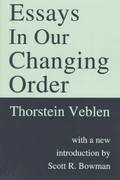Suppose that you are a silver fabricator. You will acquire 2,000,00D troy ounces of silver at the prevailing market price on March 2029, from your long-time business partner. But, you worry about the uncertainty in the market price of silver in the future. Hence, you decide to use Globe: ["online"] silver future contracts to hedge risk. You will place an order of silver future contracts at the last day closing price of the date when you enter into the futures contracts at the last closing price of March 2020 future the date when you enter into the future contracts. 1. Which type of hedge, between short and long, has to be used? 2. What is the contract size of the silver futures per one contract? How many contracts do you have to trade? 3. State the December futures price [last closing price} that you determined. Attach the snapshot of the price listing. See an example. 4. Assume that both the spot and future prices on the March 2D2I'J maturity date, 201? are 511 per ounce. Find out prots of the unhedged spot position, future position and hedged position {hedged position = unhedged spot position + future position] 5. Assume that both the spot and future prices on March 2'02!) maturity date are 526 per ounce. Find out prots of the unhedged spot positionI future position and hedged position. 6. Discuss the effectiveness of your hedged. T. Now, suppose that you don't have to acquire L ounces of silver from your business partner at the spot market in July. You will directly use the silver future market to acquire silver and to hedge price risk. Determine the cost to acquire silver of LDD ounces in the futures market only. Explain this hedge and compare with the hedged in [1] ~ {5]. 2. Instrumental variables [35 points} Suppose you are a labor economist and you are interested in the empirical relationship between the years of education and labor market earnings. too have access to a nationally-representative sample of individuals and you observe their years of education {siL labor market earnings (will, and years of labor market experience [xi]. a} Write down the returns to schooling equation [Hint a regression of the natural logarithm of earnings on years of schooling and a quadratic in years of labor market experience. Don't forget the residual I] (ll) pointsl. b] You want to estimate the causal impact of an additional year of schooling on labor market earnings using the returns to schooling equation. Can you get causal estimates simply using the OLE framework? What is the main econometric identication problem? Explain carefully {15 points]. c] Suppose you decided to implement an instrumental variables {Iv} strategy to obtain causal estimates- You are choosing among two alternative instruments: - A dummy variable indicating whether the individuals in your sample have educated or uneducated parents. - A dummy variable indicating whether the individuals in your sample are subject to a change in compulsory schooling law {say an increase from 5 years to 3 years} or not. Which one is a better I'll? Provide a technical discussion for both variables [Hint remember the two l'yr assumptions] no points]. The simultaneous-move game (shown below) is played twice, with the outcome of the first stage observed before the second stage begins. There is no discounting. The variable x is greater than 4, so that (4, 4) is not an equilibrium payoff in the one-shot game. What are the Nash equilibria in the one-shot game (Hint: there are 7 and no Nash equilibrium involves either picking Qi with positive probability)? For what values of x is the following strategy (played by both players) a subgame-perfect Nash equilibrium? Strategy for player i: Play Q in the first stage. If the first stage outcome is (Q1, Q2) then play Pi in the second stage. If the first stage outcome is (y, Q2) with y # Q1 then play R; in the second stage. If the first stage outcome is (Q1, z) with z # Q2 then play S; in the second stage. If the first stage outcome is (y, z) with y # Q1 and z # Q1 then play Pi in the second stage. P2 Q2 R2 S2 PI 2,2 x,0 1,0 0.0 Q1 0, x 4.4 -1,0 0.0 R 0,0 0.0 0,2 0,0 0.-1 0,-1 -1,-1 2.0l4. I-IrConsider a perfectly competitive market. Suppose that all rms are identical and have the same cost function G (q) = 4g. 32 (a) What is the equilibrium price, 310, facing a rm? Compute the market equilibrium quantity demanded if the market demand is g = 10 p. [In what follows, consider the monopolist's problem facing the demand q = 10 p. Cost is the same as above] (b) Compute the monopolist's optimal output, q\










